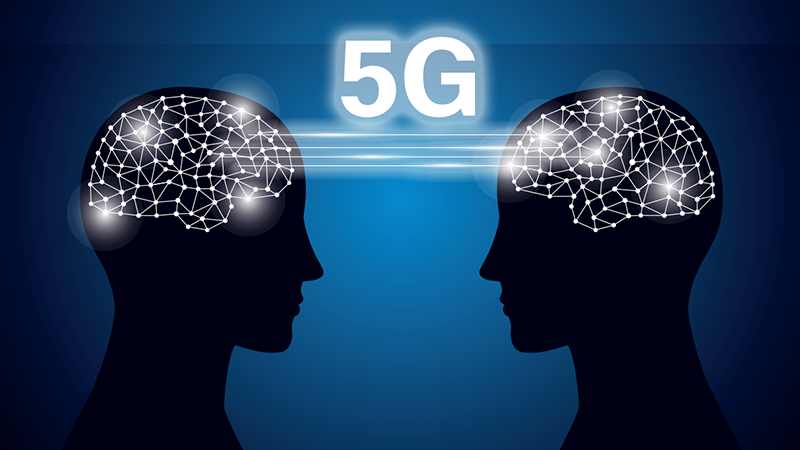It’s the meeting of two much-hyped and potentially transformative technologies.
In one corner, there’s a newbie, 5G— higher bandwidth networks promising super-fast speed and increased responsiveness and reliability. And in the other, artificial intelligence (AI)—technology that can analyze massive amounts of data and learn from previous actions. But combined together, 5G networks and AI have the potential to pack a significantly more powerful punch. Some industry experts argue that the key differentiator among mobile networks will be the quality of the AI in their systems.
“Together, AI and 5G will make possible capabilities that never existed before,” says Prakash Sangam, principal and founder of Tantra Analyst, a high-tech research, analysis and strategic advisory firm.
Increased complexity
One reason for this symbiotic relationship stems from the greater complexity of 5G networks. Why are they complicated? For starters, there’s their basic radio technology, which uses higher frequencies and requires more sophisticated connection mechanisms. In addition, the networks need to be able to adjust resources in real-time to adapt to changing conditions. Also is the sheer number of different types of devices, from robots to smartphones, that will need to be connected. And many applications, like self-driving cars, will produce large amounts of data and require massive analytical capabilities.
The upshot: AI capabilities are needed not only to understand and act on all that information, but to ensure basic dependability.
“AI, especially machine learning, can reduce the complexity of managing the 5G network and make sure it’s available and reliable,” says Jeff Loucks, executive director of Deloitte’s Center for Technology, Media & Telecommunications.
In addition, according to Loucks, AI capabilities will allow networks to identify problems, like service failures or a breakdown on the factory floor, then diagnose and fix those issues automatically. Over time, it will be able to predict problems before they happen. Plus AI can help telecommunications companies design new 5G services by analyzing data in real-time to ensure there are adequate network resources and pinpoint where more are required.
“By analyzing their historical and current network connections, companies can see what areas of the network need more investment,” says Loucks.
Edge and Cloud
AI and 5G networks also have complementary capabilities, according to industry experts.
Most important is the matter of the edge. With the introduction of small and inexpensive processors, more AI analysis and inference, according to industry experts, is going to happen not in the centralized cloud, but at the level of smartphones and other devices. This is known as edge computing, a decentralized computing system that allows for data storage to be closer to the location where it’s needed, resulting in lower latency, or the time it takes for a request to travel from the sender to the receiver and for the receiver to process that request. That’s especially true for cases where large amounts of data have to be processed immediately.
“It makes sense to keep the intelligence as close as possible to the application,” says Sangam.
Plus keeping data local, rather than residing in a centralized cloud, can increase security and privacy protections.
At the same time, processing-intensive functions are likely to take place in the cloud. But they’ll be connected to devices through a 5G network, which will provide the necessary high speed, reliability and low latency. The upshot: “Ultimately, there’s going to be a mix of 5G, AI and edge processing,” says Loucks.
Take, for example, self-driving cars. These vehicles will need to make sense of large amounts of data points from thousands of sensors—say, whether an object ahead is a person or debris—and do so continuously and in a matter of split seconds. But there’s a lot of other information, such as performance or predictive maintenance, that can reside in a centralized cloud. As important, according to Sangam, that will be the location for AI “training”— that is, where the process of identifying and classifying objects takes place.
“Learning will happen in the cloud and execution will happen at the device level,” he says.
Ports are another example. Their systems for managing, say, stacker cranes might be local, while scheduling of ships’ berthing, as well as the processing of paperwork and billing for cargo handling, would be done in a centralized cloud, according to Phil Wilson, managing director of Deloitte Consulting.
Ultimately, AI provides the intelligence to make sense of 5G’s complexity, while the 5G network provides a mechanism for transmitting the large amount of data AI systems require.
“When you combine 5G and AI, what you get is much more powerful than what you have when each is operating on its own,” says Sangram.
###
The contents or opinions in this feature are independent and may not necessarily represent the views of Cisco. They are offered in an effort to encourage continuing conversations on a broad range of innovative technology subjects. We welcome your comments and engagement.
We welcome the re-use, republication, and distribution of "The Network" content. Please credit us with the following information: Used with the permission of http://thenetwork.cisco.com/.




